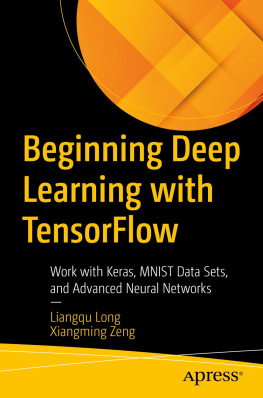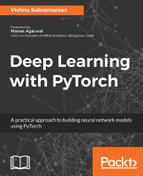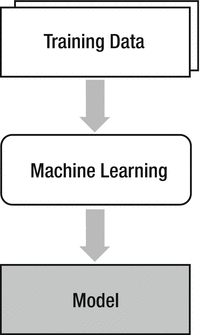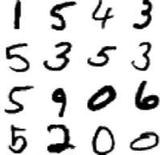1. Machine Learning
You easily find examples where the concepts of Machine Learning and Deep Learning are used interchangeably in the media. However, experts generally distinguish them. If you have decided to study this field, its important you understand what these words actually mean, and more importantly, how they differ.
What occurred to you when you heard the term Machine Learning for the first time? Did you think of something that was similar to Figure ? Then you must admit that you are seriously literal-minded.
Figure 1-1.
Machine Learning or Artificial Intelligence ? Courtesy of Euclidean Technologies Management ( www.euclidean.com )
Figure portrays Artificial Intelligence much more than Machine Learning. Understanding Machine Learning in this way will bring about serious confusion. Although Machine Learning is indeed a branch of Artificial Intelligence, it conveys an idea that is much different from what this image may imply.
In general, Artificial Intelligence , Machine Learning , and Deep Learning are related as follows:
How is that? Its simple, isnt it? This classification may not be as absolute as the laws of nature, but it is widely accepted.
Lets dig into it a little further. Artificial Intelligence is a very common word that may imply many different things. It may indicate any form of technology that includes some intelligent aspects rather than pinpoint a specific technology field. In contrast, Machine Learning refers to a specific field. In other words, we use Machine Learning to indicate a specific technological group of Artificial Intelligence. Machine Learning itself includes many technologies as well. One of them is Deep Learning , which is the subject of this book.
The fact that Deep Learning is a type of Machine Learning is very important, and that is why we are going through this lengthy review on how Artificial Intelligence, Machine Learning, and Deep Learning are related. Deep Learning has been in the spotlight recently as it has proficiently solved some problems that have challenged Artificial Intelligence. Its performance surely is exceptional in many fields. However, it faces limitations as well. The limitations of Deep Learning stems from its fundamental concepts that has been inherited from its ancestor, Machine Learning. As a type of Machine Learning, Deep Learning cannot avoid the fundamental problems that Machine Learning faces. That is why we need to review Machine Learning before discussing the concept of Deep Learning.
What Is Machine Learning?
In short, Machine Learning is a modeling technique that involves data. This definition may be too short for first-timers to capture what it means. So, let me elaborate on this a little bit. Machine Learning is a technique that figures out the model out of data. Here, the data literally means information such as documents, audio, images, etc. The model is the final product of Machine Learning.
Before we go further into the model, let me deviate a bit. Isnt it strange that the definition of Machine Learning only addresses the concepts of data and model and has nothing to do with learning? The name itself reflects that the technique analyzes the data and finds the model by itself rather than having a human do it. We call it learning because the process resembles being trained with the data to solve the problem of finding a model. Therefore, the data that Machine Learning uses in the modeling process is called training data. Figure illustrates what happens in the Machine Learning process .
Figure 1-2.
What happens during the machine learning process
Now, lets resume our discussion about the model. Actually, the model is nothing more than what we want to achieve as the final product. For instance, if we are developing an auto-filtering system to remove spam mail, the spam mail filter is the model that we are talking about. In this sense, we can say the model is what we actually use. Some call the model a hypothesis . This term seems more intuitive to those with statistical backgrounds.
Machine Learning is not the only modeling technique. In the field of dynamics, people have been using a certain modeling technique , which employs Newtons laws and describes the motion of objects as a series of equations called equations of motion, for a long time. In the field of Artificial Intelligence, we have the expert system, which is a problem-solving model that is based on the knowledge and know-how of the experts. The model works as well as the experts themselves.
However, there are some areas where laws and logical reasoning are not very useful for modeling. Typical problems can be found where intelligence is involved, such as image recognition, speech recognition, and natural language processing. Let me give you an example. Look at Figure and identify the numbers.
Figure 1-3.
How does a computer identify numbers when they have no recognizable pattern?
Im sure you have completed the task in no time. Most people do. Now, lets make a computer do the same thing. What do we do? If we use a traditional modeling technique, we will need to find some rule or algorithm to distinguish the written numbers. Hmm, why dont we apply the rules that you have just used to identify the numbers in your brain? Easy enough, isnt it? Well, not really. In fact, this is a very challenging problem. There was a time when researchers thought it must be a piece of cake for computers to do this, as it is very easy for even a human and computers are able to calculate much faster than humans. Well, it did not take very long until they realized their misjudgment.
How were you able to identify the numbers without a clear specification or a rule? It is hard to answer, isnt it? But, why? It is because we have never learned such a specification. From a young age, we have just learned that this is 0, and that this is 1. We just thought thats what it is and became better at distinguishing numbers as we faced a variety of numbers. Am I right?
What about computers, then? Why dont we let computers do the same thing? Thats it! Congratulations! You have just grasped the concept of Machine Learning . Machine Learning has been created to solve the problems for which analytical models are hardly available. The primary idea of Machine Learning is to achieve a model using the training data when equations and laws are not promising.
Challenges with Machine Learning
We just discovered that Machine Learning is the technique used to find (or learn) a model from the data. It is suitable for problems that involve intelligence, such as image recognition and speech recognition, where physical laws or mathematical equations fail to produce a model. On the one hand, the approach that Machine Learning uses is what makes the process work. On the other hand, it brings inevitable problems. This section provides the fundamental issues Machine Learning faces.










